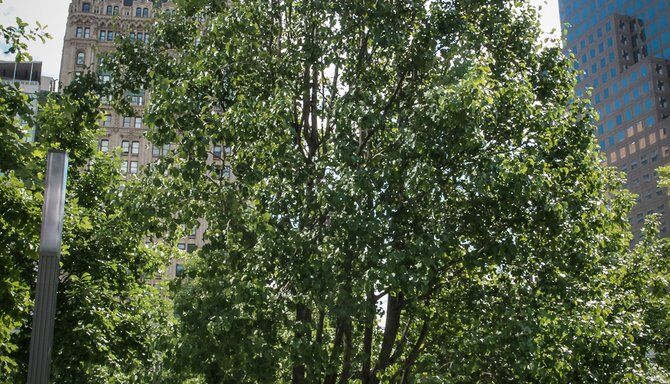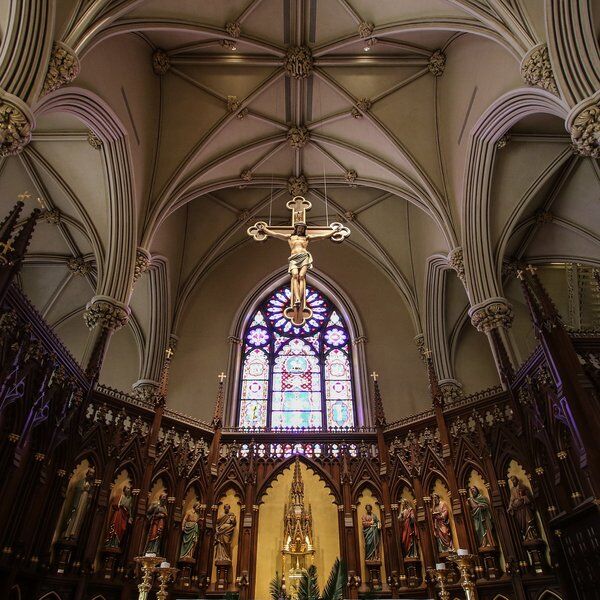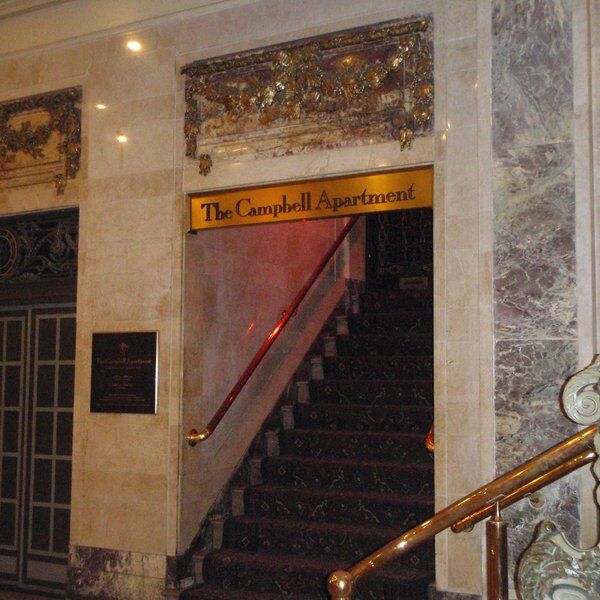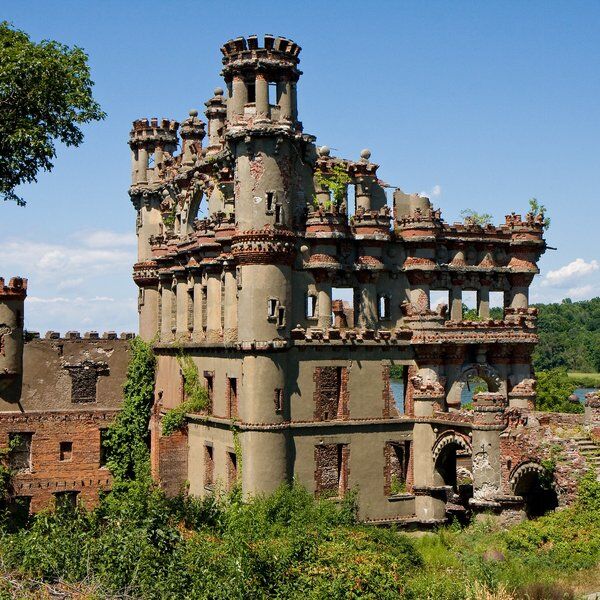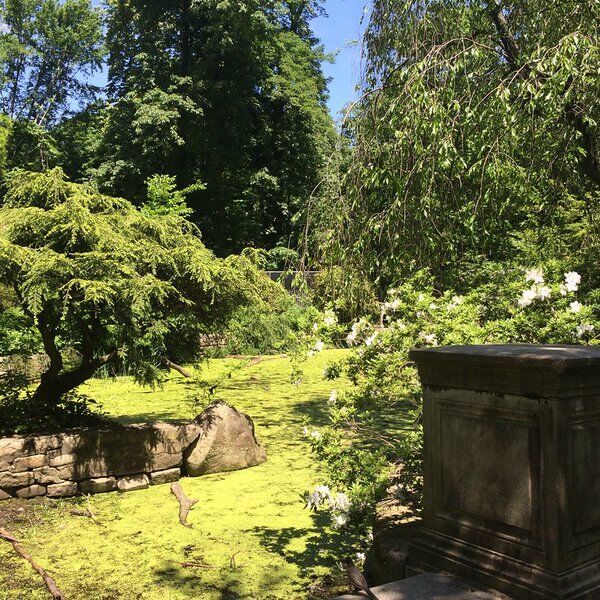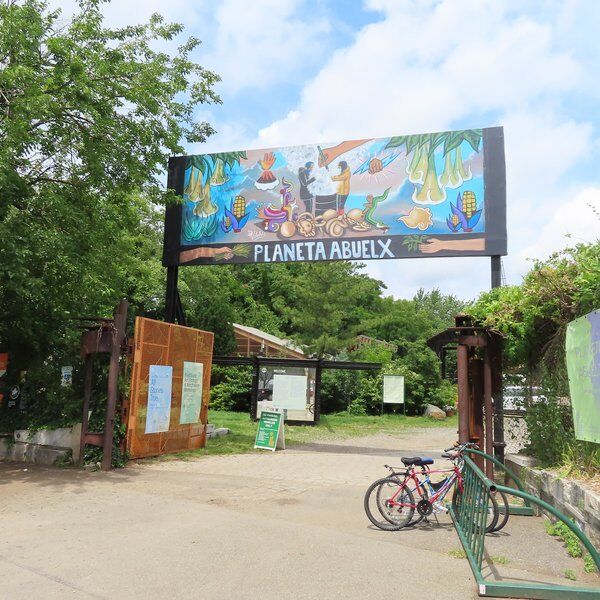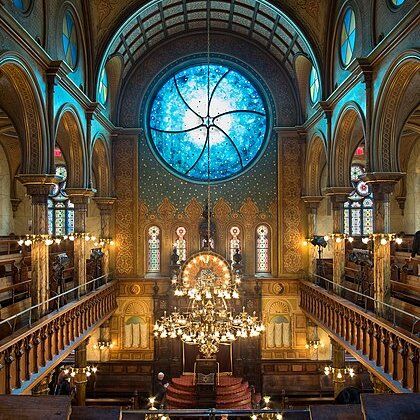Discover New York City's Survivor Tree
New York’s Survivor Tree epitomises resilience, hope, and renewal in the face of unimaginable tragedy. The battered but unbroken Callery Pear tree was recovered from the ruins almost one month after the September 11 attacks. It was then placed in the care of the New York City Department of Parks and Recreation, where every effort was taken to nurse it back to health.
In recognition of its significance, the Survivor Tree Seedling Program was launched, spreading seeds of hope to communities worldwide. From Florida, to England, and Puerto Rico, saplings from the Survivor Tree offer comfort to those facing their own hardships.
Today, situated within the larger World Trade Center complex, the Survivor Tree is an important 9/11 memorial. As visitors pause to reflect beneath its branches, they are reminded of the strength that lies within us all, and the enduring legacy of survival that defines the human experience.

The Origins of the Survivor Tree
The Survivor Tree was planted in the vicinity of the World Trade Centre in the 1970s, where it quietly observed the hustle and bustle of lower Manhattan. It provided cool respite for passersby on hot days and a habitat for wildlife. With humble roots it could not envision that it would soon play a pivotal role in the healing of a nation.
Ground Zero: Rescued from the Rubble
In October 2001, amidst the rubble of the World Trade Center, recovery workers stumbled upon a battered Callery pear tree, its branches were torn, roots entwined, and trunk scorched by the fires of destruction. Despite its dire condition, a decision was made to rescue the tree from Ground Zero, initiating its journey to recovery.
The Survivor Tree’s Journey to Recovery
Under the dedicated care of the New York City Department of Parks and Recreation, the tree was relocated to the Arthur Ross Nursery in Van Cortlandt Park, in November 2001. By November 11, the tree was replanted in the Bronx, marking a significant milestone in its restoration.
By this time New Yorkers had fallen in love with the tale of the Survivor Tree, and it had come to represent a glimmer of hope in otherwise dark times. Its initial survival seemed unlikely, but the tree defied the odds, displaying signs of new growth by Spring 2002.
Ongoing Legacy
“The tree symbolises the city and country's resilience... It was discovered in the rubble in October 2001 with snapped roots and a blackened trunk. The (pear) tree measured about eight feet high when it was taken to a Parks Department nursery in the Bronx to be nursed back to health. It now stands about 30 feet high."
Over the years, the Survivor Tree continued to thrive, and grow (!) reaching a great height of 30 ft. In December 2010, after nearly a decade of care, the Callery Pear tree was ceremoniously returned to Ground Zero.
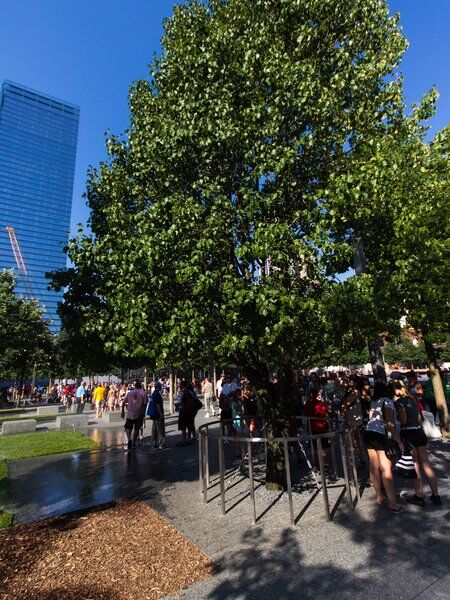
“A modest-looking tree that survived the collapse of the twin towers during the 9/11 attacks was replanted at the Sept. 11 Memorial plaza Wednesday.”
Proudly showcasing its weathered and scarred trunk to its fellow New Yorkers, the Survivor Tree stands tall amidst the World Trade Centre memorial plaza, alongside the South Pool. Each year it welcomes the arrival of Spring, as the first to blossom, continuing to symbolise hope and renewal for the people of New York City.
“New, smooth limbs extended from the gnarled stumps, creating a visible demarcation between the tree’s past and present… Today, the tree stands as a living reminder of resilience, survival and rebirth.”
In 2013, the Survivor Tree Seedling Programme took root, with the 9/11 Memorial distributing seedlings to three communities annually, each touched by recent tragedies. Over time, tree scientists have bred around 450 descendants of the original tree, showing the extent of shared solidarity.
Creating the September 11 Memorial
Following the devastating events of September 11, 2001, the Lower Manhattan Development Corporation initiated a global competition in April 2003 to create a tribute at the World Trade Center site. Amongst thousands of submissions from 63 nations, architect Michael Arad and landscape architect Peter Walker emerged victorious in January 2004.
The duo’s creation, known as Reflecting Absence, featured twin waterfall pools, in place of the former North and South Towers. Around the thick rims of these pools, the bronze is inscribed with the names of the 2,983 individuals lost in the 2001 and 1993 World Trade Centre attacks. Standing in place of the former Twin Towers, the memorial truly does reflect the absence of the building and the lives lost.
Surrounding the pools, over 400 swamp white oak trees, a resilient species native to the regions of all three crash sites, populate the Memorial plaza. And here among these resilient oaks, is the Survivor Tree, back where she belongs, offering shade and comfort to passersby and local wildlife once more.
For more information about the New York skyline after the attacks on 9/11 read our article on The Skyscraper Museum.
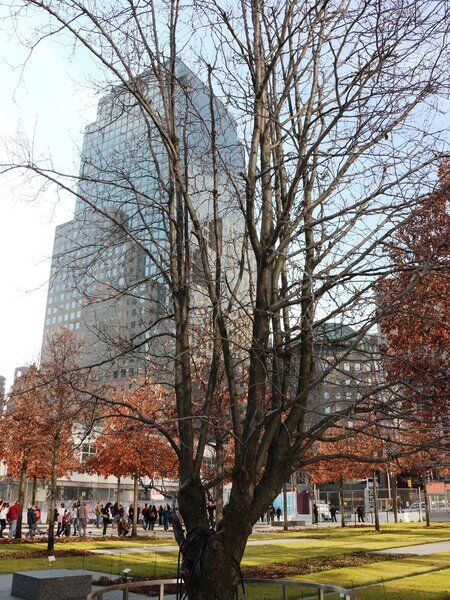
Discover More of New York with CityDays
Discover New York’s secret sites and noteworthy nooks by playing one of our New York treasure and scavenger hunts, escape room games or walking tours.
You’ll find curated trails and hunts all over New York, including Manhattan, Chelsea, Midtown and Chinatown.
All you have to do is team up with your friends, family or whoever to solve riddles, complete challenges and answer trivia to lead you on an unforgettable journey around New York’s most intriguing streets.
The best part? We’ll recommend top-rated bars, cafés and restaurants and give your team the chance to earn rewards by competing on our leaderboard.
CityDays gives you total freedom to start and finish whenever you like, take extra breaks if you want or need them, and it’s suitable for people of all ages.
You’re also guaranteed your money back if you don’t have an amazing time - although our previous reviews speak for themselves: we’re rated 5/5 on TripAdvisor and 4.95/5on Google Reviews!
